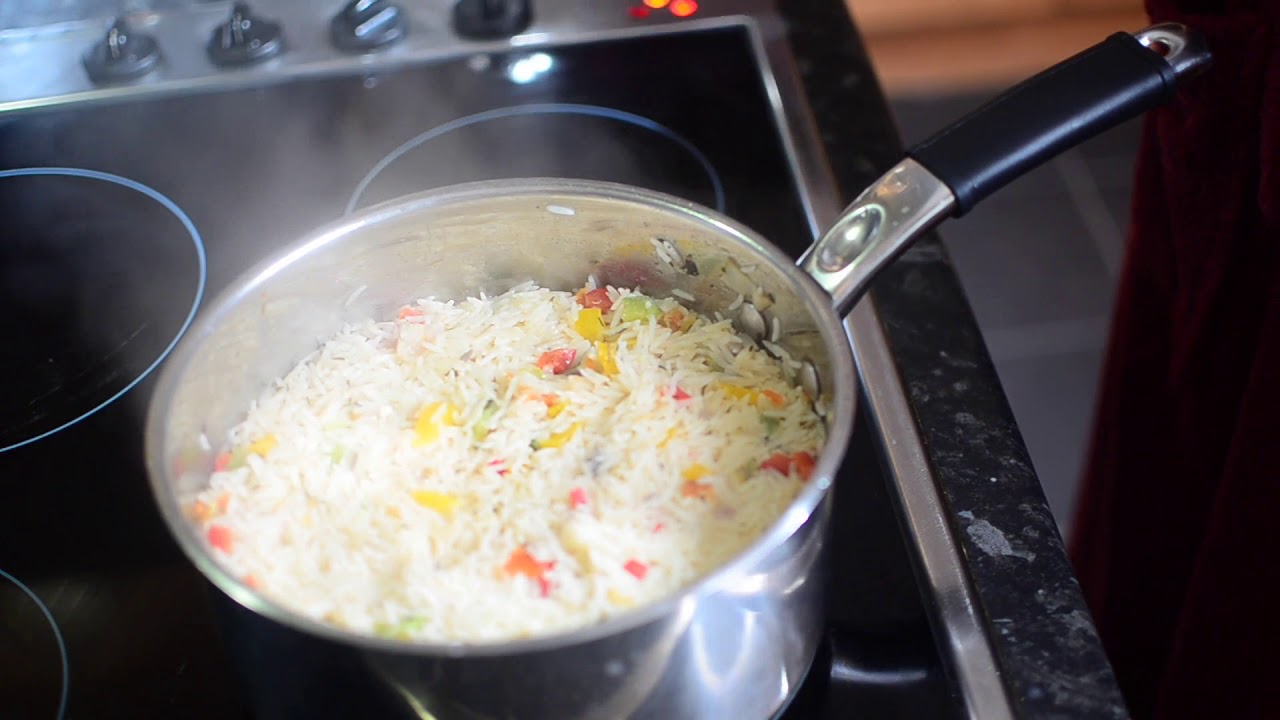Do you know how to prepare Coconut rice in Nigeria? That is a question every Nigerian should consider. If you live in Nigeria and you are a fan of Coconut rice but you can’t cook it, this article is for you.
Every Nigerian who cooks should know how to prepare Coconut rice, and that is final but if you can’t, there is a remedy for that, and that remedy is located here.

Today, Chefsbase is teaching how you can prepare Coconut in Nigeria using Nigerian ingredients, etc. That in essence means that as a Nigerian, you can stay in another man’s land and prepare Coconut rice that is not truly Nigerian because of the ingredients you will possibly make use of.
That means, the style of cooking alone does not make your dish Nigerian but the addition of the country’s ingredients. Let’s move to the next heading and learn about how to prepare Coconut rice in Nigeria.
How Do You Prepare Coconut Rice in Nigeria?
Wash the rice thoroughly and set it aside. In a large pot, heat the vegetable oil over medium heat. Add the diced onions and minced garlic, and sauté until they become translucent.
Add the diced bell peppers and carrots to the pot and sauté for a few more minutes until they soften. Add the curry powder, thyme, salt, and ground pepper to the pot and stir well to combine.

Pour in the coconut milk and water, and bring the mixture to a boil. Once the mixture is boiling, add the washed rice and dried shrimp (if using) to the pot and stir well to ensure the rice is well-coated with the coconut milk mixture.
Reduce the heat to low, cover the pot with a tight-fitting lid, and allow the rice to simmer for about 20-25 minutes or until the rice is cooked and all the liquid is absorbed. Once the rice is cooked, fluff it with a fork to separate the grains.
Garnish with fresh parsley or coriander if desired. Serve hot and enjoy your delicious Nigerian coconut rice.
How is Coconut Used in Cooking?
Flaked or shaved coconut refers to quite large, thin shavings – best for roasting or adding to your granola and trail mixes! Lastly, coconut flour can be used as a gluten-free, sweet substitute for cake flour in many baked dishes.
Which Part of Coconut is Used for Cooking?

When it comes to cooking, several parts of the coconut can be used, offering different flavours and textures depending on what you’re making:
The White Flesh
This is the most commonly used part and is known as the endosperm. You can find it fresh in mature coconuts, where it has a sweet, nutty flavour.
Freshly grated coconut adds a delicious texture and richness to curries, stir-fries, salads, and desserts. Alternatively, you can find dried coconut flakes or desiccated coconut, which are great for sprinkling on baked goods or using in granola bars.
Coconut Milk
This creamy liquid is extracted from the grated white flesh and water. It adds a rich, tropical flavour to curries, soups, stews, and even smoothies. You can find canned or tetra-packed coconut milk in most supermarkets.
Coconut Water
This refreshing liquid is found inside young, green coconuts. It’s naturally hydrating and contains electrolytes, making it a popular drink, especially after exercise.
Coconut Oil
Extracted from the white flesh, coconut oil is a healthy and versatile cooking oil with a high smoke point. It’s great for frying, sautéing, and even baking.
Coconut Sugar
Made from the sap of coconut blossoms, coconut sugar is a natural sweetener with a low glycemic index. It can be used as a substitute for regular sugar in baking and other recipes.
Coir
While not directly used for cooking, the brown, fibrous husk of the coconut (coir) can be used to make brushes, mats, and filters.
So, there you have it! The coconut is a versatile fruit with plenty of culinary uses beyond just the white flesh. Experiment with different parts and products to discover your favourite coconut-infused flavours.
Please let me know if you have any other questions about coconuts or need specific recipe suggestions! However, let us know if you have any questions regarding cooking coconut rice in Nigeria.


Leave a Reply